6. The Brood (1979)
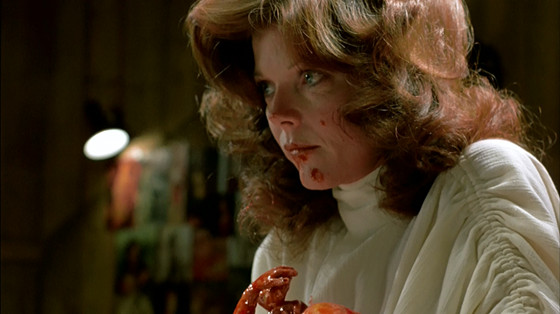
The Brood likewise is a horror film utilized as a vehicle, this one telling a story of divorce and trauma. However, that does not mean the film frequently delves into the absurd. For instance, the film seems to play it rather straight with the progression of the plot before having Juliana murdered by a dwarf-like child. Randomness is the name of the game in The Brood and greatly helps it as one of Cronenbeg’s more unusual endeavors. The dwarf creature ends up being the very reason Somafree, the institution helping Nora manage her grief, closes down, although being a small piece of the plot up to this point. Oh, but the dwarfs are actually manifestations of Nora’s grief that emerge from a womb on the outside of her body.
Once again, The Brood offers up a unique way of making the whole experience come off as inexplicable. Cronenberg withholds information about Nora and the dwarf-children for so long and makes them seem so disconnected. He gives the audience a sense of what Nora is dealing with yet never does he make it seem her rage would push her to become so violent. The film’s climax comes off as one of the weirdest sections because of how quickly Nora decides to attempt to kill her daughter, as opposed to losing her. The moment comes off as so unexpected as strange because of what Cronenberg has withheld. He does not articulate Nora’s anger in a way that makes her seem dangerous. So, when she is, the moment comes off as surreal. The Brood itself is a surreal nightmare that has aged well in spite of how unusually spontaneous it can be sometimes.
7. Dead Ringers (1988)
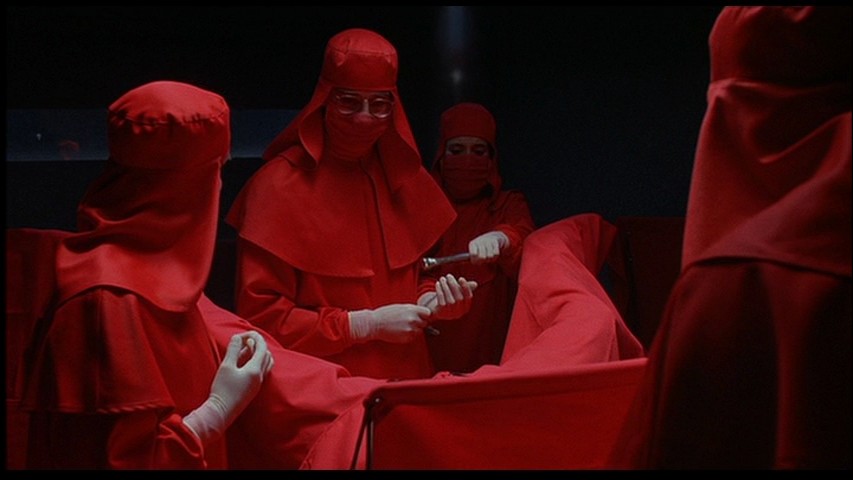
Whenever a film deals with madness, things are bound to get freakish. Look no further than Dead Ringers, which fools the audience with a customary exterior just to pull the rug under them as the film ramps up. The tale of two gynecologists butting heads while sharing women is no premise that seems exclusive to Cronenberg, but then the dreams come into play. When Claire, the actress Beverly has fallen in love with, leaves town, he sinks into a perverted depression. He starts by dreaming of abnormal women with abnormal genitalia but refuses to stop there. No, he, in real life, pursues a way to cure these figments of his imagination by looking to make instruments to operate on them. Fellow doctors naturally think Beverly has lost his mind and suspend him from operating, along with his brother. So, brother Elliott does the only logical thing possible and starts taking drugs Beverly took to “synchronize” with his brother’s mental state.
The illogical character decision only makes way for wacky, demented hallucinations caused by the drugs they take, which honestly is something Cronenberg should use more. In retrospect, it is far from the most bonkers entry on the list, but the mid act hook of a man dreaming of mutant female genitalia and believing he must operate on them simply cannot be ignored.
8. Naked Lunch (1991)
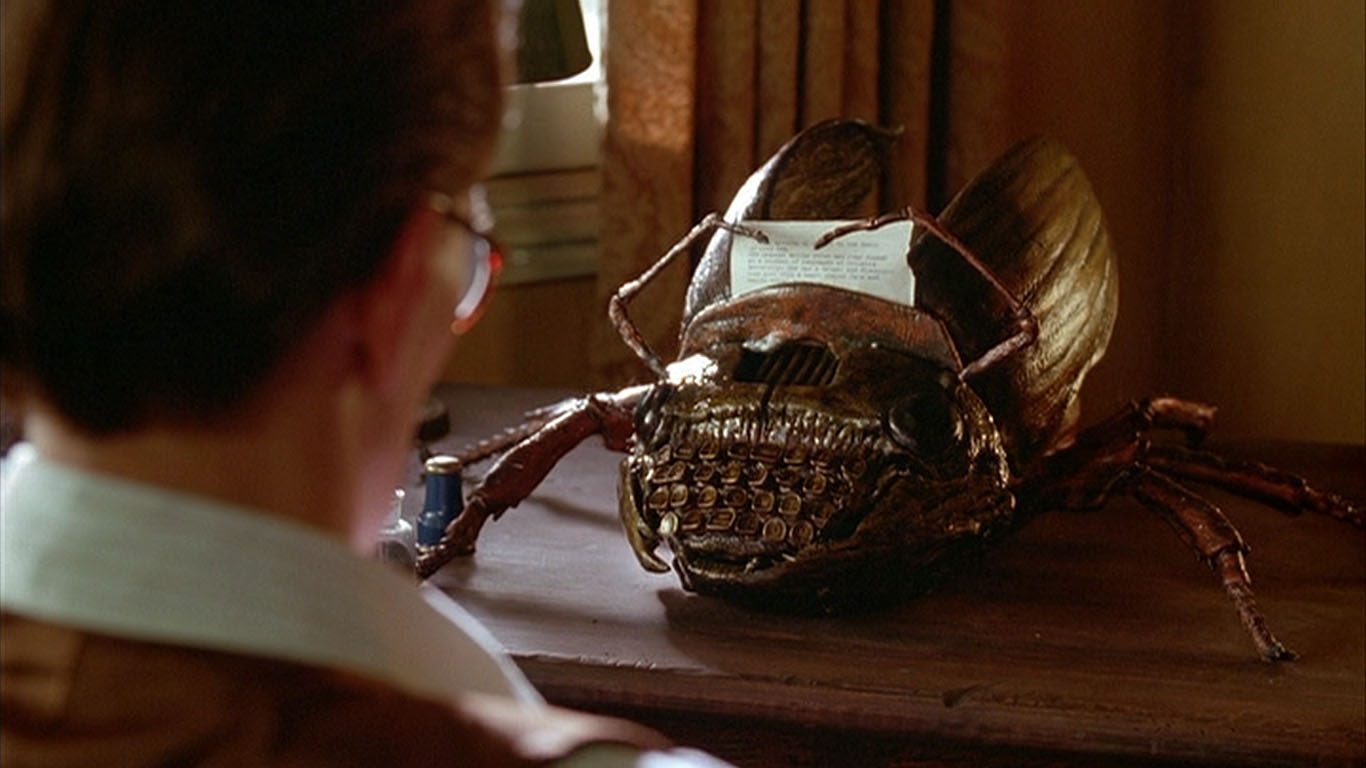
It is hard to say what is crazier, the concept of an exterminator believing he is a secret agent and that his boss is a giant beetle, or the actual frame of Peter Weller, looking like he would fit into the middle of a noir film, talking to a life-sized bug brought to life. Naked Lunch may just be the king of Cronenbeg’s insane features. Its life-sized insect creatures mixed with 1940s detective settings already makes for a dizzying mix of visual styles but somehow is topped by the even more dizzying plot. Hank kills his wife after finding her having sex with another man, but it was not even on purpose. He was trying to shoot a glass off her head. But then a doppelgänger of his wife comes back, which Hank has to find because another insect told him to. But it was not originally an insect. It was originally a typewriter.
But the pure madness of it all comes from the utmost seriousness with which every situation is dealt with. It does not have fun with the idea. It does not play anything for laughs. It emulates a sixties or seventies era spy movie but with a conspiracy centered around giant bugs. More than any other film it seems too good to be true. Too out of the box to seem convincing with a large budget and with a director with faith in the vision but that is exactly what it is. And maybe the fact a studio backed this in the first place is the strangest thing of all.
9. eXistenZ (1999)
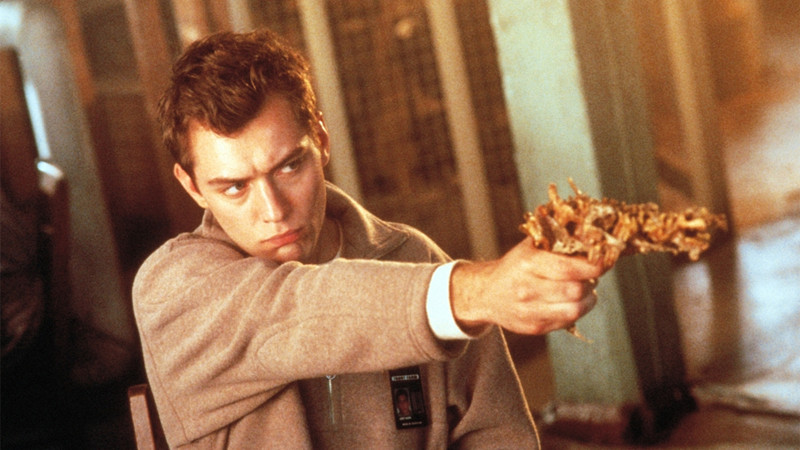
Back in 1999, The Matrix was considered rather outlandish for mainstream audiences. But what helped audiences overcome the complexity of The Matrix and the elements it shares with Plato’s allegory of the cave was that so much of it played out like a typical action blockbuster. eXistenZ, on the other hand, deals with multiple layers of reality without providing action scenes to help numb the audience. It, instead, allows the video game world to act as an excuse for Cronenberg to get almost as weird as he ever has in some moments in the film. Such as when Pikul creates a gun from the inedible parts of a Chinese dish he had for dinner and can actually kill people with the gun. He happens to shoot his waiter at the restaurant, but that waiter happened to be the contact Pikul and Geller were supposed to meet with.
eXistenZ ends up feeling a lot like the plot of a Metal Gear Solid game. Anything goes. Nothing is written in stone. The multiple layers of reality leave both the audience and the main characters relatively clueless as to when the characters are in a video game or not. Geller and Pikul will find themselves at a ski lodge or a Church with no recollection of getting there, or what layer of the video game they are in. And it is so easy to get distracted with Pikul, Vinokur, and Nourish all having differing allegiances at one point or another. These two elements can really make the film feel like an unsolvable puzzle, but even the smaller details indulge in oddity. The actual video game is not accessed with a controller or headset but with “Umbrycords” that attach to ports that appear more than anything else to be the inside of a person’s stomach. eXistenZ at times can flat out come off as an exercise of Cronenberg taking the path of most resistance in conjuring up a strange plot. He keeps on inverting the story and its meaning with the double crosses and cuts to weird locales to the point where reality is totally lost by the end.
10. Spider (2002)
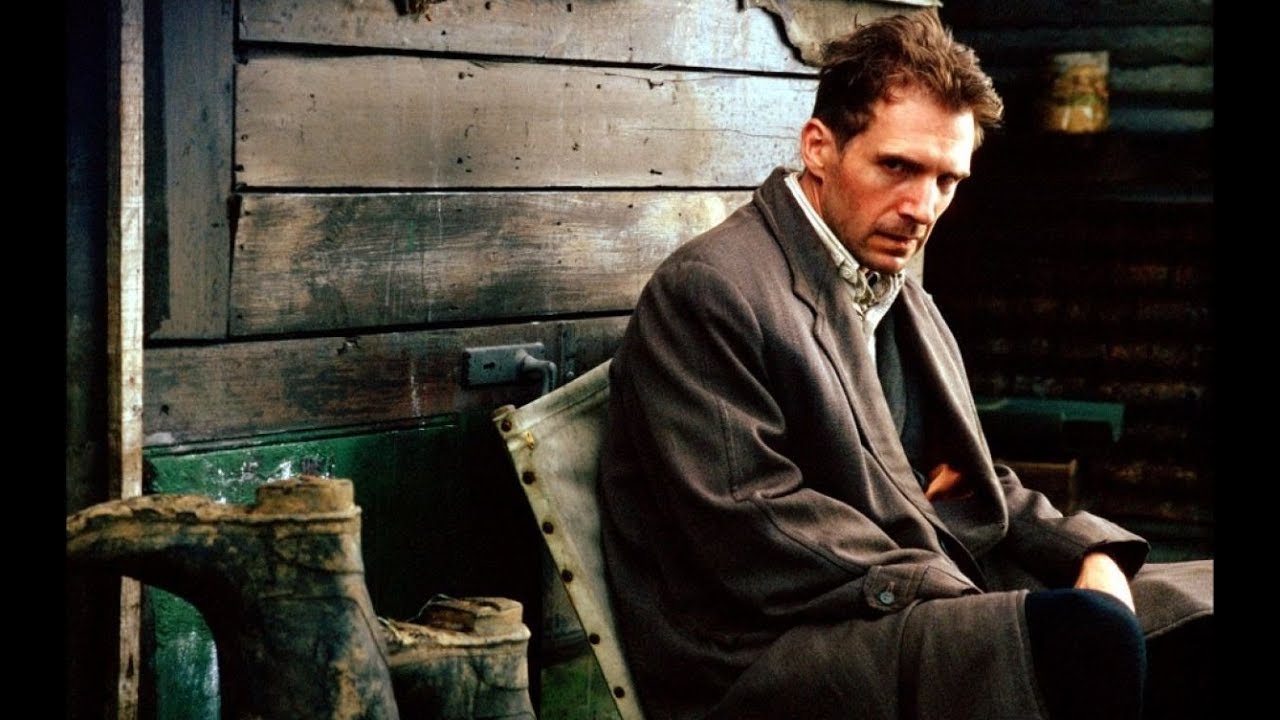
Giving Cosmopolis a run for its money in terms of the structure best suited for Cronenberg, Spider and its main character make way for endless bizarre possibilities. The story of Dennis Cleg tunneling through his own memory could virtually go anywhere, as any image of peculiar remembrance can hold significance without much explanation at all. Thankfully, Spider does not choose to really hammer home an abstract presentation, but there are many moments that will have viewers questioning the logical cohesiveness of the story. Dennis dives back into his childhood and ends up remembering the death of his mother. This seems decisively typical until the prostitute his father used to meet with is presented as his mother. Bill effectively gaslights Dennis, and it has effects on him in the present day, where Dennis begins imagining his landlady as said prostitute. This is made all the more out of the ordinary when the landlady is then replaced by not the prostitute, but by his own mother at the end of the movie.
Here, Cronenberg allows the subjective protagonist to give Spider a strange quality. Dennis’ confrontation with his old memories may be the one of the few overwhelmingly strange things about the film, but the twists and uncertainty of Dennis himself makes the film feel like a deviant adventure What Cronenberg does to amplify said weirdness is just his total refusal to give a Hollywood ending that will leave the viewers with a straightforward answer. The film, after all, is an adaptation and all the hallucinations that will leave the viewer guessing were made by the offer but Cronenberg could have altered the film to appeal to more people. He, of course, does not, and proceeds to use time jumping and and different actresses in a single role to make for an oddball dive into the man’s memory.